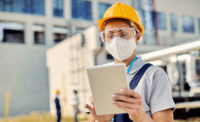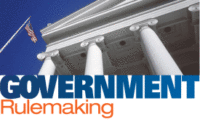The history of the COVID-19 pandemic is still being written. When this pandemic ends – and it will end – a new normal may last for months, years, or forever. Planning for the after-effects of a pandemic is necessary.
Next war
Humankind has always been at war with infectious diseases. When a skirmish with an infectious agent such as SARS, MERS, or Swine Flu, doesn’t materialize into the “big one” defenses are relaxed. A pandemic is ripe to occur when humankind’s defenses are relaxed too much.
Humankind must leap into battle whenever an infectious disease gains an advantage. Pandemic experts rang bells and flashed red lights in recent years that conditions favored infectious diseases. OHS pros were called to arms. Some headed the call to duty. Some didn’t.
Battle-hardened
Training is necessary to win a pandemic war. You don’t train battle-hardened soldiers the same as boot-camp recruits.
From 2006-2008, I developed and presented the eight-hour PDC “Managing safety during a pandemic” at ASSP’s SeminarFest held annually in Las Vegas. The PDC students were trained like boot-campers. Stern and fear were the PDC’s training style. “If you don’t treat the information as serious, many people may die,” the students were told.
OHS pros, workers and others coming out of the COVID-19 fight, where casualties were high, don’t need lectures on the seriousness of pandemics. Incorporate information at the free “The Science of Well-Being online course in your post-pandemic training to reduce battle fatigue and stress. Yale University’s well-being online course had enrollment over 1.6 million as of March 31. The course rated 4.9 out of 5.0 stars by students. Yale’s on-campus well-being course is the largest class ever in the university’s 300-year history – about one in every four Yale students have taken the class. Learn and share what many others find very rewarding.
Social distance
Social distance, handwashing, PPE, vaccines, and prepare for business disruption were the main topics covered in pandemic PDCs I taught in Vegas. Post COVID-19, new norms with social distance may remain at workplaces and other locations for a very long time. Gone will be handshakes. Elbow bumps may be replaced with a social distance nod.
Onsite and offsite meeting rooms that could be packed to the safety egress occupancy limits pre-COVID likely will be replaced post-COVID by voluntary social distance health occupancy limits. Expect to see posted health occupancy limits at business meeting rooms. Health occupancy limits = fewer attendees = increased price to attend = more classes if large number of attendees are necessary. Follow the dominos. The dominos lead to great pressure for improved quality per meeting, perhaps shorter meetings, and increased demand for online and virtual reality training.
Business continuity plans
Post-pandemic, your organization will have actual examples of how its business was disrupted and how preparations would have lessened negative impacts. Examples of business continuity plans are provided at www.ready.gov. These plans are not required by OSHA. OHS pros, however, should be highly involved with development of these plans. Organizations of any size that don’t develop or update a business continuity plan after this pandemic, shouldn’t be in business.
Respect for science
Humankind’s greatest weapon during a pandemic war is science. What’s the strength of the infectious enemy? What are the weapons that must be obtained, created and deployed to weaken and overcome the enemy? Facts, facts, facts. Data, data, data. Politicians, the public and other stakeholders must defer to scientists for these answers. A pandemic war can’t be won without scientists.
Pre-pandemic respect for scientists has been on the decline as evidenced by the necessity to create the annual March for Science that began on April 22, 2017. Post-pandemic respect for science in form of increased budgets, at least for a few years, is certain. Dire warnings from scientists, such as global warming, are likely to be fast-tracked for U.S. legislation post-pandemic.
Many OHS pros, particularly industrial hygienists, may be categorized as a scientist. Prior to January 2020, who could have imagined that abbreviations OHS pros take for granted such as N95 and PPE would be spoken globally without further explanation? OHS pros may leverage enhanced respect for scientists at least a year or two post-pandemic. What leverage means, however, will be defined by each pro.
Trends and forecasts
Scientists make forecasts based on trends that follow pandemics or a similar major crisis. OHS pros must seek out this timely data among their key areas of interest. For example, a key interest of mine is health and safety protections for pregnant workers. Pre-pandemic trends such as the U.S. House Pregnant Workers Fairness Act H.R. 2694 with 229 cosponsors as of March 4, 2020 are hugely significant. Post-pandemic will this topic’s importance rise or fall?
Data forecasts that “COVID could boost births over four years after the epidemic runs its course by anywhere from 0.3% to 40%.”1 Other data and facts reviewed supports the upper range of the forecast. Pregnant worker concerns will be greater post-pandemic than pre-pandemic. Seeing what’s coming, I obtained, for under $200, the web domain pregnantworkers.com.
Conclusion
COVID-19 pandemic is historic. Generations from now history should show that U.S. OHS pros in 2020s helped establish the new normal for next pandemic war.
Reference
1. https://ifstudies.org/blog/will-the-coronavirus-spike-births




